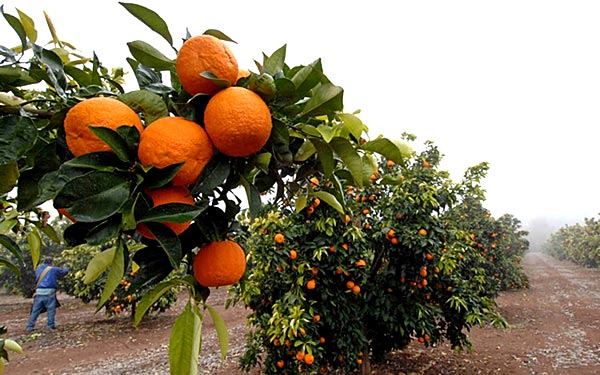By Don Curlee
Counting the ways farming in California differs from farming in the rest of the country might result in some surprises, especially for proud Californians.
To begin with, farms in California are about 25 percent smaller on average than those in the rest of the country. The contrast between farming here and farming there is even more remarkable when you consider that the state’s smaller farms outpace those in the rest of the country by producing almost five times the dollar amount per acre. Of course, that means farmers in the Golden State receive more income than those elsewhere.
These characteristics of the country’s farm profile come from information collected in the 2012 Census of Agriculture, the latest every-five-years exercise conducted by the federal government. Comparing data from the most recent census with that from the 2007 effort reveals some memorable results.
Some of those results have been compiled by Emma Knoesen, a research associate and Rachael Goodhue, a professor of Agricultural Resource Economics (ARE) at the University of California, Davis. Their report was published in the May/June issue of Update, published by the Giannini Foundation of Agricultural Economics at Davis.
In the conclusion of their report they say: “(The census) indicates that California agriculture remains distinct from U. S. agriculture as a whole, although in both cases farms continue to grow larger in both acreage and market value of production.”
One of the report’s tables shows that almost a quarter of California farms are between one and nine acres, compared to only 11 percent of farms at that size elsewhere in the country. Another quarter of California farms are between 10 and 49 acres, not that different from the rest of the country, and 17 percent fall into that 50 to 179- acre bracket, opposed to 30 percent of farms that are outside the state.
A very telling statistic puts the number of California farms with 2,000 acres or more at 2,434, while the number of farms in the other 49 states with 2,000 acres or more is more than 82,000. Seems that fly-over country has some pretty big spreads, and it isn’t puny backyards where Texans raise their cattle.
Perhaps even more telling is the effect of California’s higher value crops, the vegetables, fruits and specialty commodities. The report says: “The average market value of production per acre of farmland in California was $1,667, compared to $289 in the United States as a whole.”
On average, California farms produced a market value of $547,510, about three times that of other U.S. farms, which averaged $187,097.
Production of high-value fruit and vegetable crops continued in California at about the same pace and in about the same places as reported in the 2007 census. Tree and vine crops dominated the Central Valley counties, and vegetables were the commodities of choice in coastal areas and in the Imperial Valley.
Imperial County registered a strong increase from 2007 to 2012 in the amount of land used to grow vegetables, from less than 69,000 acres in the earlier census to nearly 106,000 acres in 2012. The number of farms growing vegetables there increased as well, from 86 to 105.
Even though the number of California farms decreased from 2007 to 2012, the total market value of their production increased by a little more than 25 percent.
No question, farming is a winner in California and a significant contributor to the state’s economy. If overzealous legislators and social and environmental purists can control themselves enough to leave it alone the state’s different-but-better agriculture can continue to prosper and continue to help overcome world hunger.



